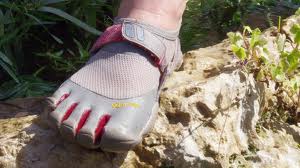Polyurethane
Polyurethane has become the most popular sole materials in the Rivers range of shoes. Polyurethane is a compound that consists of many tiny air bubbles to provide unbeatable shock absorption and durability. Different densities of polyurethane can be achieved by varying the amount of air bubbles in the compound, which will vary a sole’s shock absorption and durability capacity.
Thermo Plastic Rubber
Rivers Thermo Plastic Rubber soles are produced by compounding and moulding rubber granules of solid raw material. Rivers use only the highest quality materials in their T.P.R. soles. They do not use shredded old car tyres which is common in this type of sole. T.P.R. is renowned for its slip resistance and shock absorption.
Nitrol Polyvinyl Chloride
Nitrol Polyvinyl Chloride or P.V.C. has extremely good durability and reasonable slip resistance. A common problem for many P.V.C. soles is stickiness under hot conditions. Rivers have added nitrol to their sole compound to eradicate this problem.
Latex Rubber
Rivers use a Latex Rubber that is naturally soft. This old fashion material gives it great flexibility as well as excellent bounce. It has good shock absorption and excellent surface grip. The sign of the rubber being of a high quality can be determined by the aroma of the sole.
Ethyl Vinyl Acetate
Ethyl Vinyl Acetate or E.V.A. is one of the best shock absorption materials available today. This is the reason why all the major top-line brand joggers use this material due to the great combination of shock absorption with the light weight of the sole.
Leather
What can we say? Leather is Leather. It does not wear as well as the rubber compound soles, and certainly does not have good slip resistance or shock absorption, but many people still love to have the old-fashioned feel of a leather sole.
DUAL DENSITY POLYURETHANE
Two different densities of polyurethane in one.
Dual Density Polyurethane is the combining of two different densities of polyurethane (tough on the outside and soft and comfortable on the inside) to increase the shoe’s durability and shock absorption.
Bottom layer is built for duration.
The bottom layer being for durability, is made from a large portion of raw materials. This is moulded with minimal room for expansion, minimizes air bubbles, and leaves a solid durable layer on the bottom.
Top layer is built for shock absorption.
The top layer is for shock absorption and uses the opposite principles. A small portion of raw material is used and allowed to expand, leaving a soft, cushion-like layer on the top of each sole.
Conclusion
The Dual Density Polyurethane soles mean extended life and greater comfort with an extremely lightweight sole.
















